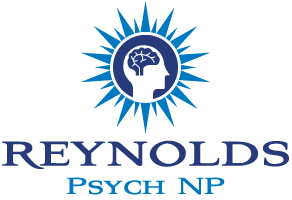If you’ve ever found yourself endlessly scrolling through bad news late at night, even when you know it’s making you anxious, you’ve experienced what psychologists call “doomscrolling.” It’s the compulsive act of consuming negative news, especially online, for long periods. Whether it’s stories about conflict, disasters, or political chaos, doomscrolling keeps your brain in a constant state of alert. While it may seem harmless at first, over time it can deeply affect your mental health, mood, and overall sense of well-being. Understanding why we do it and learning how to stop can help you regain control over your mind and emotions.
What Is Doomscrolling?
The term “doomscrolling” became popular during the COVID-19 pandemic, but the behavior existed long before. It describes the habit of scrolling through an endless stream of bad news, unable to look away, even when it causes stress or sadness. It’s not just about curiosity; it’s a psychological loop driven by fear, uncertainty, and the brain’s craving for information. Humans have evolved to seek out potential threats. In the modern world, that instinct translates into constantly checking news updates to feel prepared or informed. Unfortunately, this often leads to more stress rather than relief.
Why the Brain Craves Bad News
Our brains are wired with what psychologists call the “negativity bias.” This means we naturally pay more attention to negative information because it once helped our ancestors survive dangerous situations. In today’s digital world, this survival mechanism keeps us glued to alarming headlines, thinking the next scroll might reveal something important or help us feel safer.
The problem is that news media and social platforms know this. Their algorithms prioritize shocking or emotional content because it captures attention and increases engagement. Each time you refresh your feed, your brain gets a small burst of dopamine the same chemical involved in addiction creating a cycle that’s hard to break.
The Mental Health Effects of Doomscrolling
At first, doomscrolling might seem like a way to stay informed, but prolonged exposure to distressing news takes a serious toll on mental health.
1. Anxiety and Stress: Constantly reading about violence, disasters, or political conflict activates the body’s stress response. Your heart rate and cortisol levels rise, leading to chronic anxiety and restlessness.
2. Sleep Disturbances: Many people doomscroll before bed, thinking they’ll check the news “one last time.” This keeps the brain stimulated and delays sleep, often causing insomnia or poor rest quality.
3. Depression and Hopelessness: Repeated exposure to negativity can make the world seem unsafe or beyond repair. Over time, it may lead to feelings of sadness, helplessness, or depression.
4. Decreased Productivity: When your mind is overloaded with distressing information, it becomes harder to focus or make clear decisions. Even short doomscrolling sessions can leave you mentally drained.
How Doomscrolling Affects Your Body
The effects of doomscrolling aren’t just psychological they’re physical too. Chronic stress from constant negative exposure can weaken the immune system, increase blood pressure, and cause fatigue. People who doomscroll daily often report headaches, eye strain, and general exhaustion. Your body responds to the emotional distress of the news as if it were a real, immediate threat, keeping you in a prolonged state of tension.
Why It’s So Hard to Stop
Doomscrolling can feel addictive because it mimics the same reward system that drives other compulsive behaviors. Each new headline provides a mix of fear and curiosity that makes your brain crave more. This cycle is intensified by “variable rewards” you never know when the next piece of information will feel meaningful or shocking, so you keep scrolling just in case.
Another reason it’s hard to stop is that many people believe being constantly informed gives them control. In reality, it often has the opposite effect. The more we expose ourselves to distressing information, the more powerless and anxious we feel.
The Role of Social Media
Social media platforms amplify doomscrolling because they blend news with personal commentary, arguments, and emotional reactions. This constant exposure to strong opinions and alarming updates can make users feel overwhelmed or divided. The endless feed design makes it nearly impossible to reach a natural stopping point, encouraging people to scroll far longer than intended.
How to Break the Doomscrolling Cycle
1. Set Time Limits for News Consumption
Decide how often you’ll check the news each day maybe 15 minutes in the morning and 15 in the evening. Turn off push notifications that constantly draw you back in.
2. Create a “News-Free Zone”
Avoid consuming news before bedtime or first thing in the morning. Use those times for relaxing routines like reading, journaling, or spending time outdoors.
3. Curate Your News Sources
Follow reputable outlets that report facts without sensationalism. Avoid accounts or pages that use fear-based headlines or spread misinformation.
4. Practice Mindful Scrolling
Before you open a news app or social platform, pause and ask yourself: “Why am I checking this right now? Is it helping or harming my mood?” That moment of awareness can interrupt the automatic scrolling habit.
5. Replace the Habit with a Healthier One
Every time you feel the urge to scroll, redirect that energy toward something positive stretching, walking, calling a friend, or even taking a few deep breaths. Over time, your brain will start to associate stress relief with healthier activities.
6. Set Physical Boundaries
Keep your phone out of reach during meals, work, or relaxation time. You can also use apps that block access to certain sites after you’ve hit a daily limit.
7. Focus on What You Can Control
Doomscrolling often stems from a desire to understand or fix global problems. Instead of consuming endless information, channel that energy into meaningful actions volunteering, donating, or supporting local initiatives.
The Power of Positive Media
One effective way to counter doomscrolling is to balance your news intake with positive or solutions-based content. Seek out stories that highlight community progress, innovation, or acts of kindness. Following pages that share uplifting news can help retrain your brain to see that the world isn’t entirely negative.
Studies show that people who intentionally consume positive media report better mood regulation and greater optimism. It doesn’t mean ignoring real problems it means acknowledging that good things are happening too.
Rebuilding a Healthy Relationship with Information
You don’t have to completely disconnect from the world to protect your mental health. The goal is to build a balanced relationship with information. Be selective about what you consume, question the emotional tone of what you read, and give yourself permission to take breaks. Staying informed should empower you, not exhaust you.
When to Seek Support
If you notice that news consumption is interfering with your sleep, work, or relationships, it might be time to seek professional help. Therapists trained in anxiety or stress management can teach coping tools that help you process difficult emotions without avoidance or overload. Even brief counseling sessions can make a big difference.
Conclusion
Doomscrolling might feel like staying informed, but in reality, it’s a mental trap that feeds anxiety and hopelessness. The constant flow of negative information keeps your mind in a state of alert, making peace of mind feel out of reach. By setting boundaries, choosing reliable sources, practicing mindfulness, and focusing on positive action, you can take back control of your attention and your mental health. Remember, staying informed is important but your well-being matters more than any headline.







